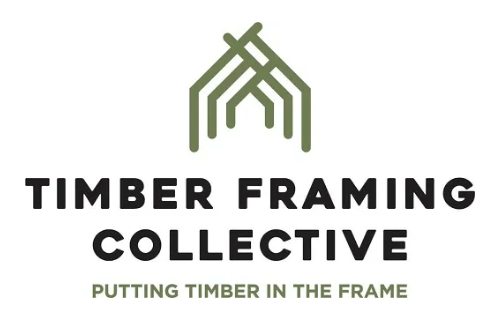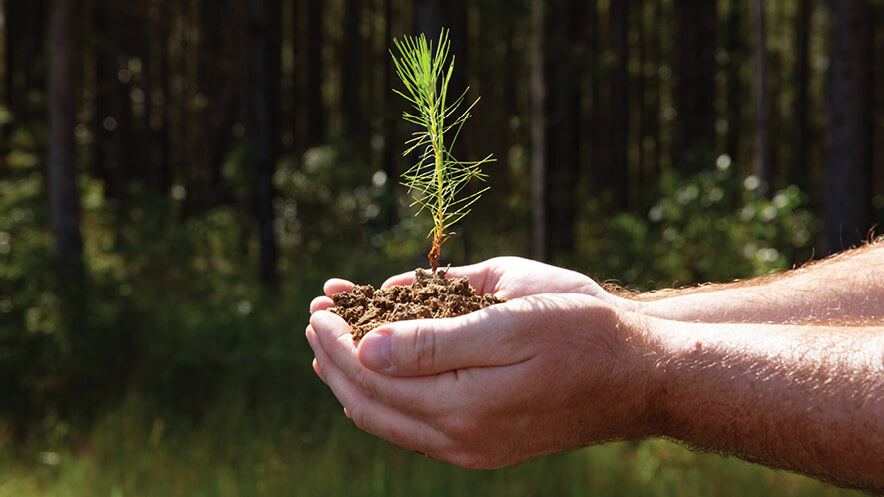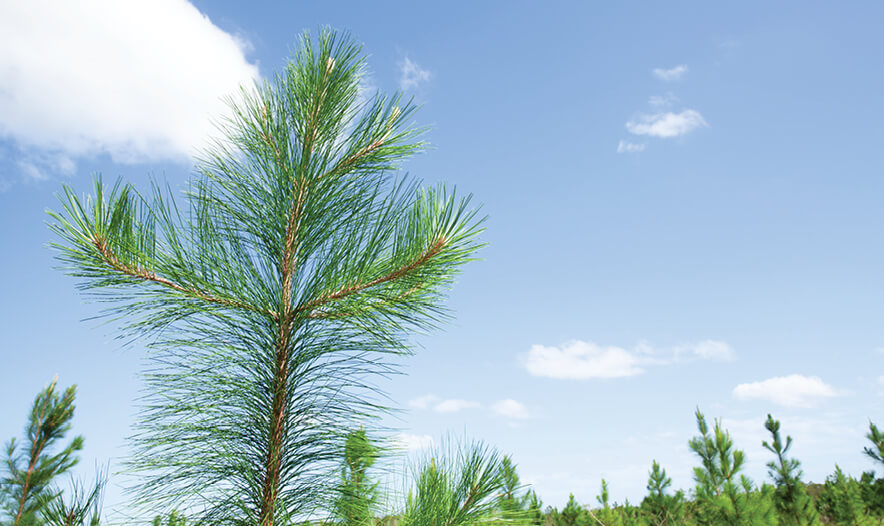
This piece was written and provided by the Timber Framing Collective.
If trees absorb the carbon dioxide that contributes to global warming, how can harvesting them for timber framing be good for the environment?
Working with timber daily, we don’t often stop to think about where the timber in framing comes from: the trees it grows from, how it’s produced and what footprint it leaves behind.
With negative perceptions about logging and deforestation, people often think cutting down trees is a bad thing. However, when timber comes from sustainably managed softwood, it’s one of the most eco-friendly building materials available.

Sustainably managed softwood
Most of the timber framing we manufacture comes from sustainable softwood plantations in Australia, with sustainably managed imports playing a valuable role in meeting demand.
Careful planning goes into the harvesting and replanting of these trees to ensure environmental protection and a supply that lasts for years and years. Through a rigorous, internationally recognised certification process, these plantations balance people, planet and profit. They safeguard ecologically important areas, prohibit widespread deforestation and respect the rights of workers.
Well-managed forests are one of the best ways to help the planet. According to the Intergovernmental Panel on Climate Change, sustainably harvesting and regrowing forests for timber delivers the best climate change mitigation results (IPCC, 2007).
Why softwood?
Fast growing
Softwood plantations can produce more wood per hectare than many native and hardwood forests, making them more efficient at meeting demand (Forestry Corporation, 2023). Our softwood plantations grow the amount of timber framing needed for an average home every two and a half minutes.
Carbon mitigation
These faster growing trees are better at sequestering carbon. Sustainably managed softwood trees grow for around 30 years before they are harvested. This allows them to capture large amounts of carbon that stays locked up in timber products, like timber framing. What’s more, younger trees collect carbon dioxide at a much faster rate, so it’s actually a good thing that they replace the older trees. The result is a production process that removes more CO2 than it emits.
In Australia alone, sustainable softwood plantations form a network that removes around 5 million tonnes of CO2 from the atmosphere each year, offsetting around 10% of the CO2 Australian manufacturing companies emit per year.
Strong and durable
Softwood timbers are structurally strong, lightweight, easily transported and easy to work with. Some species have higher durability and strength ratings than many hardwoods. This makes softwood ideal for structural framing.

Australian softwood plantations
Australia has approximately one million hectares of established softwood plantations, which grow about 70 per cent of the softwood we use (Australian Government Department of Agriculture, Fisheries and Forestry, 2023).
We grow a range of different softwood species, both native and non-native. Native species, such as hoop pine, celery top pine and white cypress are mostly grown in plantations across Tasmania and the eastern states. Non-native species, such as radiata pine and slash pine, are grown across the country, with radiata pine the most common (WoodSolutions, 2023).
Australian plantations are self-sustaining. For every tree that’s harvested, at least one new tree is planted in its place. We replant over 70 million trees every year.
International forests
With timber framing in such high demand, internationally imported softwoods—like European spruce and pine, and Canadian spruce pine fir—help sustain our supply. These imports come from forests and sawmills across Nordic, Baltic and Central Europe and North America.
Regeneration
In sustainable Swedish forests, at least two trees are planted for every tree that is harvested. Their harvesting, production and distribution release less carbon dioxide than the growing forests bind (Vida, 2023).
Innovation
Like many Australian companies, overseas producers reduce their footprint further by taking advantage of timber’s by-products. They create emissions-neutral power that both heats up plants and many homes (Vida, 2023).
Sustainable, renewable, natural
Every choice we make has an impact. When we choose to work with sustainably sourced timber framing over other materials, we help protect the environment while building the homes and buildings necessary for Australia to grow and prosper.
The more timber framing we use, the more sustainable forests we plant, preserving our home and protecting the air we breathe. Let’s build a better world. Let’s build with timber framing.
Learn more about Timber Framing – The Ultimate Renewable™.
References
Australian Forest and Wood Products. (2022). Facts.
Australian Government Department of Agriculture, Fisheries and Forestry. (2022). Australian Forest and Wood Product Statistics: March and June Quarters, 2022.
Forestry Corporation. (2023). Sustainability.
Intergovernmental Panel on Climate Change. (2007). AR4 Climate Change 2007: Mitigation of Climate Change. Chapter 9: Forestry.
Responsible Wood. (2023). We Exist to Ensure Forest Sustainability.
WoodSolutions. (2023). Softwood Species.
Vida. (2023). Vida and the Environment.
Our Principal Partners



